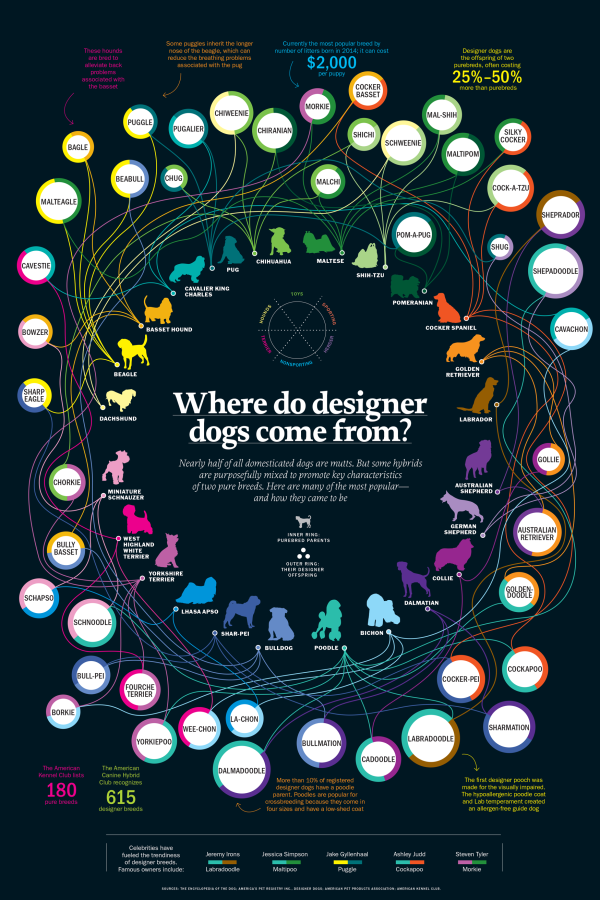Dogs Hate Hugs
The Dogs Hate Hugs infographic from Pet Insurance U reveals the surprising fact that dogs really don't like being hugged.
This infographic shows humans why, in spite of this whole hugging fiasco, dogs are still your best friends. Do dogs hate hugs? Researchers studied pictures of humans hugging dogs, and 81.6% of the dogs showed visible signs of distress, discomfort, stress or anxiety.
Designed by NowSourcing, this is a good example of an infographic highlighting an insight that is probably surprising to the audience. Infographics should share some insight or knowledge learned from data research that will actually teach the readers something new.
I have one major issue with the way they visualized their data. The statistic of "Oxytocin levels rise by 57.2% when dogs play with their owners" is visualized with a non-zero baseline, making the increase in the bar chart appear to by a 10x difference. This visualization is extremely misleading. Don't adjust the scale of the y-axis to over-emphasize a change in the data!
Thanks to Brian for sending in the link!









 Randy
Randy

